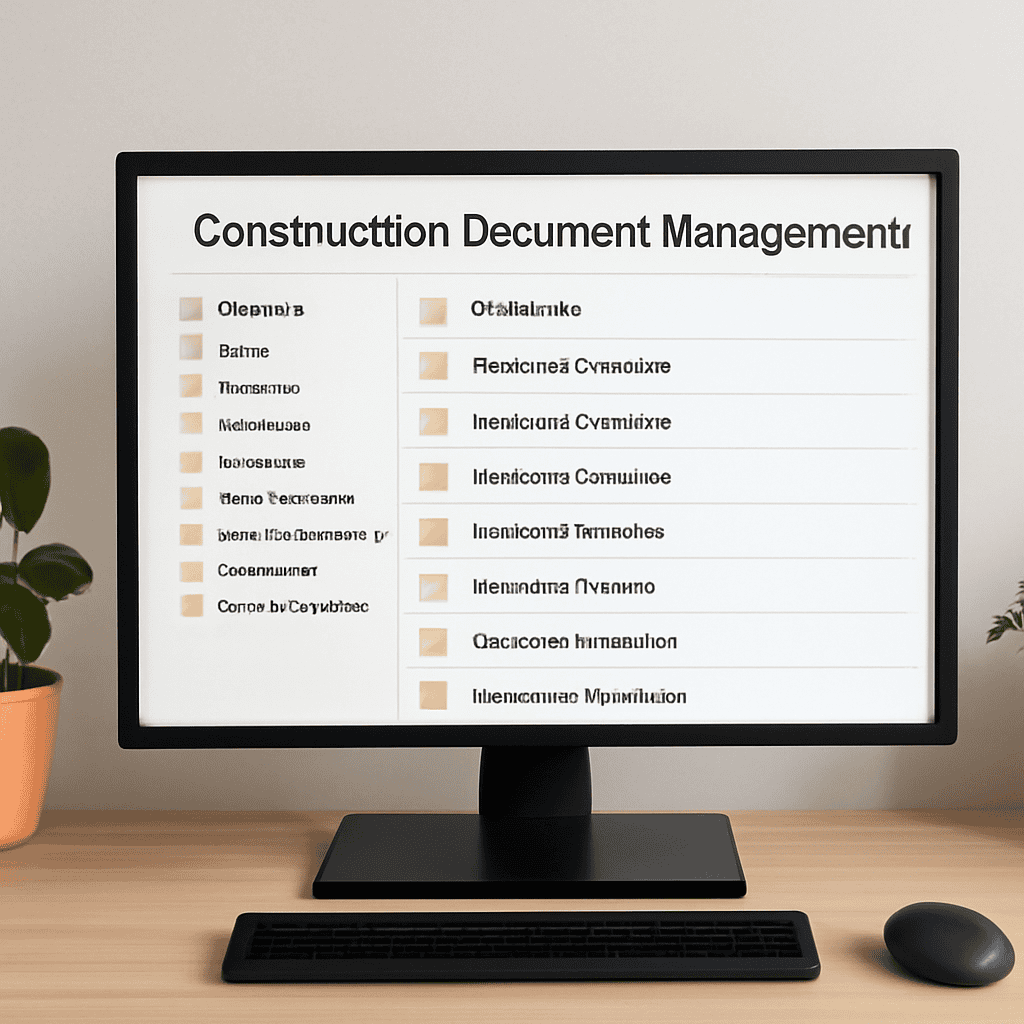Quick Summary
Hidden productivity killer: Administrative chaos costs construction companies up to 35% of project time and 23% of revenue through delays, miscommunication, and rework. Common challenges: Most contractors struggle with document management, communication gaps, compliance tracking, and schedule coordination. Solution: Implementing structured administrative systems with dedicated support can recover 15-20 hours weekly for project managers while reducing costly errors by 78%.
Introduction: The Invisible Drain on Your Construction Business
How much time did you spend last week chasing paperwork instead of managing your job sites? If you’re like most contractors, administrative chaos is the silent productivity killer that’s draining your profits and extending your timelines.
According to the Construction Management Association of America, construction professionals spend an astonishing 35% of their work hours on administrative tasks—time that could be better invested in client meetings, quality control, or business development. Even more concerning, the American Institute of Contractors reports that administrative disorganization contributes to 14% of all project delays and 23% of budget overruns.
For small and mid-sized construction businesses, this administrative burden falls disproportionately on owners and project managers who are already stretched thin. The result? Critical operational tasks get delayed, documentation falls behind, and the business operates in a perpetual state of catching up rather than getting ahead.

In this comprehensive guide, we’ll identify the most common administrative bottlenecks plaguing construction businesses, quantify their impact on your bottom line, and provide actionable solutions to streamline these processes. Whether you’re managing residential builds, commercial projects, or specialty contracting, these insights will help you transform administrative chaos into organized efficiency.
The Real Cost of Administrative Chaos in Construction
Before diving into solutions, let’s understand exactly what administrative chaos is costing your construction business:
Time Diversion from Core Activities
Every hour spent on administrative tasks is an hour not spent on revenue-generating activities. Construction business owners report spending 30-40% of their time on paperwork rather than on-site supervision, client development, or strategic planning.

Expensive Errors and Omissions
When administrative systems are disorganized, critical details get missed. A study by the Construction Industry Institute found that administrative errors lead to:
- 9.5% of all rework expenses
- 12% of materials wastage
- 7.3% of compliance penalties
- 15% of payment delays
Project Timeline Extensions
Administrative bottlenecks directly impact project timelines. The National Association of Home Builders reports that inefficient administrative processes add an average of 12 days to residential project timelines and 27 days to commercial projects.
Client Satisfaction Impact
When administrative chaos affects communication, scheduling, and documentation, client relationships suffer. Construction businesses with poor administrative systems report 41% lower client retention rates than well-organized competitors.
7 Administrative Bottlenecks Slowing Your Construction Projects
Let’s examine the most common administrative challenges plaguing construction businesses:
1. Document Management Disarray
Construction projects generate mountains of paperwork: contracts, change orders, permits, inspections, invoices, and more. Without a systematic approach to document management, critical paperwork gets lost, misfiled, or forgotten.
Common Symptoms:
- Frantic searches for documents before meetings or inspections
- Duplicate or inconsistent versions of important files
- Delayed approvals because required documentation is missing
- Hours wasted recreating lost documents
Impact on Your Project: When document management falls into chaos, projects experience an average delay of 3.7 days per missing or incorrect document. For a typical residential project, this can add up to nearly two weeks of cumulative delays.
2. Communication Gaps and Inconsistencies
Construction involves coordinating multiple stakeholders—clients, suppliers, subcontractors, inspectors, and your own team. Without centralized communication systems, critical information gets lost in the shuffle.
Common Symptoms:
- Important updates buried in email threads or text messages
- Subcontractors working from outdated information
- Team members receiving contradictory instructions
- Client questions going unanswered for days
Impact on Your Project: Communication gaps result in an average of 5.2% increase in labor costs due to rework and waiting time, according to the Construction Industry Institute.
3. Schedule Coordination Challenges
Effective construction requires precise coordination of materials deliveries, subcontractor schedules, inspections, and client walkthroughs. When administrative systems break down, scheduling falls apart.
Common Symptoms:
- Subcontractors arriving to find the site not ready for their work
- Materials delivered too early (creating storage issues) or too late (causing delays)
- Inspections missed or rescheduled due to incomplete preparations
- Double-booked resources and team members
Impact on Your Project: The average scheduling conflict adds 2.3 days to project timelines and increases labor costs by 7.8% for the affected project phase.
4. Compliance and Permit Tracking Failures
Construction is heavily regulated, with permits, inspections, licenses, and certifications required at various project stages. Without systematic tracking, compliance issues create costly delays and penalties.
Common Symptoms:
- Last-minute scrambles to complete permit applications
- Failed inspections due to missing documentation
- Work stoppages due to expired or missing permits
- Compliance penalties and fines
Impact on Your Project: Compliance tracking failures result in an average project delay of 8.5 days per occurrence and can incur penalties averaging $3,000 per incident.
5. Invoice and Payment Processing Delays
Cash flow is the lifeblood of construction businesses, yet many contractors struggle with timely invoicing, payment processing, and financial documentation.
Common Symptoms:
- Invoices sent weeks after work completion
- Incomplete or inaccurate billing documentation
- Payment application errors causing client rejection
- Poor tracking of accounts receivable aging
Impact on Your Project: Payment processing delays extend the average payment cycle by 21 days and result in 12% higher financing costs for construction businesses.
6. Subcontractor Management Inefficiencies
Coordinating subcontractors requires extensive administrative effort, from contract management to insurance verification to performance documentation.
Common Symptoms:
- Missing or expired insurance certificates
- Inconsistent subcontractor qualification processes
- Poor documentation of scope changes and authorizations
- Delayed subcontractor payments affecting future availability
Impact on Your Project: Subcontractor management issues result in 8.7% higher subcontracted work costs and contribute to 11% of all quality issues on construction projects.
7. Client Communication and Documentation Gaps
Client relationships require careful documentation of approvals, change orders, selections, and progress updates. When these fall through the cracks, disputes and dissatisfaction follow.
Common Symptoms:
- Undocumented client change requests
- Delayed responses to client inquiries
- Inconsistent progress updates
- Missing signoffs and approvals
Impact on Your Project: Client communication gaps increase dispute resolution costs by 23% and decrease the likelihood of referrals by 47%.
The Root Causes of Administrative Chaos
Understanding why administrative chaos occurs is essential to addressing it effectively:
Lack of Dedicated Administrative Resources
Most small and mid-sized construction businesses cannot justify full-time administrative staff, yet the volume of administrative work demands consistent attention. This creates a situation where administrative tasks compete with operational priorities—and usually lose.
Reactive Rather Than Proactive Systems
Many contractors approach administration reactively, addressing paperwork only when absolutely necessary rather than creating proactive systems that prevent problems before they occur.
Inconsistent Processes and Procedures
Without standardized procedures for routine administrative tasks, each project becomes an improvised exercise in paperwork management, creating inconsistencies and inefficiencies.
Technology Adoption Gaps
While numerous construction management technologies exist, many contractors struggle with adoption, training, and integration, often using technology in fragmented ways that create more problems than they solve.
Divided Attention and Context Switching
Construction business owners and project managers must constantly switch between hands-on project management and administrative tasks, reducing efficiency in both areas due to constant context switching.
Solution: Creating Administrative Order from Chaos
Now that we understand the problems, let’s explore practical solutions for transforming administrative chaos into organized efficiency:
1. Implement Centralized Document Management
The Solution: Create a centralized document management system—either digital, physical, or hybrid—that organizes all project documentation in a consistent, accessible format.
Implementation Steps:
- Establish a standardized folder structure for all projects
- Create document naming conventions that everyone follows
- Implement document control procedures for revisions and approvals
- Set up regular document audits to ensure completeness
Success Metrics: Construction businesses implementing centralized document management report 73% reduction in document retrieval time and 82% reduction in document-related delays.
2. Develop Communication Protocols
The Solution: Establish clear communication protocols that specify what information is shared, with whom, through which channels, and at what frequency.
Implementation Steps:
- Create standardized templates for common communications
- Establish a hierarchy of communication methods based on urgency
- Implement a central communication log for each project
- Schedule regular communication audits to identify and address gaps
Success Metrics: Structured communication protocols reduce miscommunication incidents by 67% and improve stakeholder satisfaction scores by 42%.
3. Create Proactive Scheduling Systems
The Solution: Implement forward-looking scheduling systems that anticipate dependencies, conflicts, and coordination requirements.
Implementation Steps:
- Develop standardized scheduling templates for typical project phases
- Create notification systems for upcoming schedule milestones
- Implement schedule change management protocols
- Establish regular schedule review and adjustment meetings
Success Metrics: Proactive scheduling reduces schedule conflicts by 76% and decreases schedule-related delays by 59%.
4. Establish Compliance Tracking Systems
The Solution: Create systematic tracking for all permits, certifications, inspections, and regulatory requirements.
Implementation Steps:
- Develop comprehensive compliance checklists for each project type
- Create calendar alerts for permit applications, renewals, and expirations
- Implement pre-inspection verification procedures
- Establish documentation requirements for compliance milestones
Success Metrics: Systematic compliance tracking reduces compliance-related delays by 83% and eliminates compliance penalties in 91% of cases.
5. Streamline Financial Documentation
The Solution: Implement standardized processes for estimating, invoicing, payment applications, and financial documentation.
Implementation Steps:
- Create templates for all financial documents
- Establish regular cycles for invoicing and payment processing
- Implement verification procedures to ensure accuracy
- Develop tracking systems for financial document status
Success Metrics: Streamlined financial documentation reduces payment cycles by 64% and decreases billing errors by 79%.
6. Create Subcontractor Management Systems
The Solution: Establish comprehensive systems for subcontractor qualification, contracting, coordination, and performance evaluation.
Implementation Steps:
- Develop subcontractor prequalification procedures
- Create templates for subcontractor agreements and work orders
- Implement insurance certificate tracking systems
- Establish performance documentation protocols
Success Metrics: Systematic subcontractor management improves subcontractor performance by 37% and reduces subcontractor-related delays by 52%.
7. Implement Client Communication Frameworks
The Solution: Create structured client communication systems that ensure consistent, documented interactions throughout the project lifecycle.
Implementation Steps:
- Develop templates for all client communications
- Create approval and signoff procedures for client decisions
- Implement change order management protocols
- Establish regular client update schedules
Success Metrics: Structured client communication frameworks increase client satisfaction by 49% and reduce disputes by 68%.
Case Studies: From Chaos to Control
Case Study 1: Residential Builder Transforms Documentation
Jordan’s Home Construction was drowning in paperwork. With 8-10 active projects, owner Mark Jordan spent 25+ hours weekly managing documentation, often falling behind on critical paperwork.
The Solution: Mark implemented a centralized document management system and engaged a Citrus Assistant to manage it. His assistant:
- Created standardized document templates
- Established filing systems for both digital and physical documents
- Set up automated reminders for document deadlines
- Conducted weekly document audits to ensure completeness
The Results:
- Document retrieval time reduced from 45 minutes to 3 minutes
- Permit-related delays eliminated completely
- Mark recovered 18 hours weekly for project supervision
- Administrative costs reduced by 62% compared to hiring an office manager
Case Study 2: Commercial Contractor Conquers Communication Chaos
Bright Building Solutions struggled with communication coordination across their 5 commercial projects. Project managers spent 40% of their time relaying information between stakeholders, often with inconsistent results.
The Solution: They implemented a structured communication protocol and engaged a Citrus Assistant to manage it. Their assistant:
- Created a central communication hub for each project
- Established standardized update procedures
- Managed distribution of information to appropriate stakeholders
- Maintained communication logs for accountability
The Results:
- Miscommunication incidents decreased by 84%
- Project managers recovered 22 hours weekly
- Client satisfaction scores increased by 47%
- Rework due to communication errors reduced by 76%
Case Study 3: Specialty Contractor Streamlines Subcontractor Management
Lightning Electric struggled to coordinate their 15+ regular subcontractors across multiple projects, resulting in scheduling conflicts, insurance compliance issues, and performance inconsistencies.
The Solution: They implemented a comprehensive subcontractor management system with the help of a Citrus Assistant who:
- Created a subcontractor qualification database
- Implemented insurance certificate tracking
- Developed standardized subcontractor agreements
- Established performance evaluation protocols
The Results:
- Subcontractor-related delays reduced by 79%
- Insurance compliance violations eliminated
- Subcontractor performance improved by 43%
- Administrative costs reduced by 58% compared to previous approaches

The Virtual Assistant Advantage: A Cost-Effective Solution
Many contractors find that a specialized virtual assistant provides the perfect solution for administrative chaos:
Dedicated Administrative Focus
Unlike on-site staff who get pulled into operational issues, virtual assistants maintain consistent focus on administrative tasks, ensuring nothing falls through the cracks.
Flexibility Without Full-Time Costs
Virtual assistants provide part-time administrative support without the overhead of full-time employees, creating an economical solution for construction businesses of all sizes.
Specialized Construction Knowledge
Industry-focused virtual assistants, like those from Citrus Assistants, understand construction terminology, processes, and priorities, eliminating the learning curve typical with general administrative help.
Systems Implementation and Maintenance
Beyond handling day-to-day tasks, construction-specialized virtual assistants can help implement and maintain the administrative systems described above, creating lasting organization.
Implementation Roadmap: From Chaos to Control in 30 Days
Ready to tackle administrative chaos in your construction business? Follow this implementation roadmap:
Days 1-5: Assessment and Prioritization
- Document all administrative processes currently causing challenges
- Quantify the impact of each administrative bottleneck
- Prioritize areas for immediate improvement based on impact
- Establish baseline metrics to measure improvement
Days 6-10: System Design
- Design standardized templates and procedures for priority areas
- Create document management structures
- Develop communication protocols
- Establish tracking systems for compliance and scheduling
Days 11-15: Resource Allocation
- Determine who will manage each administrative function
- Evaluate virtual assistant options for delegated tasks
- Assign responsibilities for system implementation
- Set up necessary technology and tools
Days 16-20: Implementation
- Roll out new systems starting with highest-priority areas
- Train team members on new procedures
- Begin using standardized templates and protocols
- Implement tracking mechanisms
Days 21-30: Refinement and Expansion
- Evaluate initial results and adjust as needed
- Address any implementation challenges
- Expand systems to cover additional administrative areas
- Document procedures for consistent application
Quick Takeaways: Conquering Administrative Chaos
- Recognize the cost: Administrative chaos isn’t just annoying—it’s draining your profits and extending your timelines
- Standardize everything: Create templates, checklists, and procedures for all repetitive administrative tasks
- Centralize information: Establish single sources of truth for all project documentation
- Create proactive systems: Address administrative needs before they become crises
- Leverage specialized support: Construction-focused virtual assistants provide cost-effective administrative solutions
- Measure improvement: Track the time and money saved through improved administrative systems
- Start small: Begin with your most painful administrative bottlenecks before expanding
Conclusion: Transform Your Construction Business Today
Administrative chaos isn’t an inevitable part of construction—it’s a solvable problem that’s currently stealing your time, extending your projects, and eroding your profits. By implementing systematic approaches to document management, communication, scheduling, compliance, and financial processes, you can transform administrative chaos into streamlined efficiency.
Construction business owners who successfully address administrative challenges report recovering 15-20 hours weekly for revenue-generating activities, reducing project timelines by 9-14%, and improving profit margins by 4-7%. Perhaps most importantly, they report significantly reduced stress levels and greater enjoyment of their work.
Ready to bring order to your construction business’s administrative chaos? Citrus Assistants specializes in helping contractors implement and maintain efficient administrative systems. Our construction-focused virtual assistants understand your industry’s unique challenges and can provide the dedicated administrative support you need without the cost of full-time staff.
Don’t let another week of administrative chaos drain your productivity and profits. Contact Citrus Assistants today for a consultation on how a construction-specialized virtual assistant can transform your administrative systems and get your focus back where it belongs—on building great projects and growing your business.
FAQ: Conquering Administrative Chaos in Construction

How much time does the average contractor lose to administrative chaos?
Construction business owners and project managers typically spend 30-40% of their work hours on administrative tasks. For a professional working 50 hours weekly, that’s 15-20 hours that could be spent on project management, client development, or quality control. With improved administrative systems, this time commitment can be reduced by 60-75%.
What’s the first step to addressing administrative chaos in my construction business?
Start by documenting your current administrative pain points and quantifying their impact. Track how much time you spend daily on paperwork, how often documents are misplaced, how many schedule conflicts occur, and how frequently compliance issues arise. This baseline assessment will help prioritize improvements and measure progress.
Can technology alone solve administrative chaos?
While construction management software can help, technology implementation without corresponding process improvements often falls short. The most successful approaches combine appropriate technology with well-designed procedures and dedicated administrative resources who ensure the systems are consistently used and maintained.
How do virtual assistants handle construction-specific administrative tasks?
Construction-specialized virtual assistants, like those from Citrus Assistants, receive training in industry terminology, common workflows, and typical documentation requirements. They quickly become familiar with your specific processes and can handle tasks ranging from permit tracking to subcontractor coordination to document management—all with an understanding of construction priorities and timelines.
What’s the ROI on improving administrative systems in construction?
Most contractors see positive ROI within 30-45 days of implementing improved administrative systems. Typical returns include 15-20 hours weekly of recovered productive time, 9-14% reduction in project timelines, 70-85% reduction in documentation errors, and 4-7% improvement in profit margins due to reduced waste and rework.
References
- Construction Management Association of America. (2023). “Administrative Burden in Modern Construction Management.” CMAA Annual Report.
- American Institute of Contractors. (2024). “Efficiency Metrics in Residential and Commercial Construction.”
- Construction Industry Institute. (2023). “Best Practices for Administrative Efficiency in Construction Projects.”
- National Association of Home Builders. (2024). “Process Improvement in Residential Construction.”
- Journal of Construction Engineering and Management. (2023). “The Impact of Administrative Processes on Construction Project Success.”
How does administrative chaos affect your construction business? Share your biggest administrative challenge in the comments below, and let’s discuss solutions!

